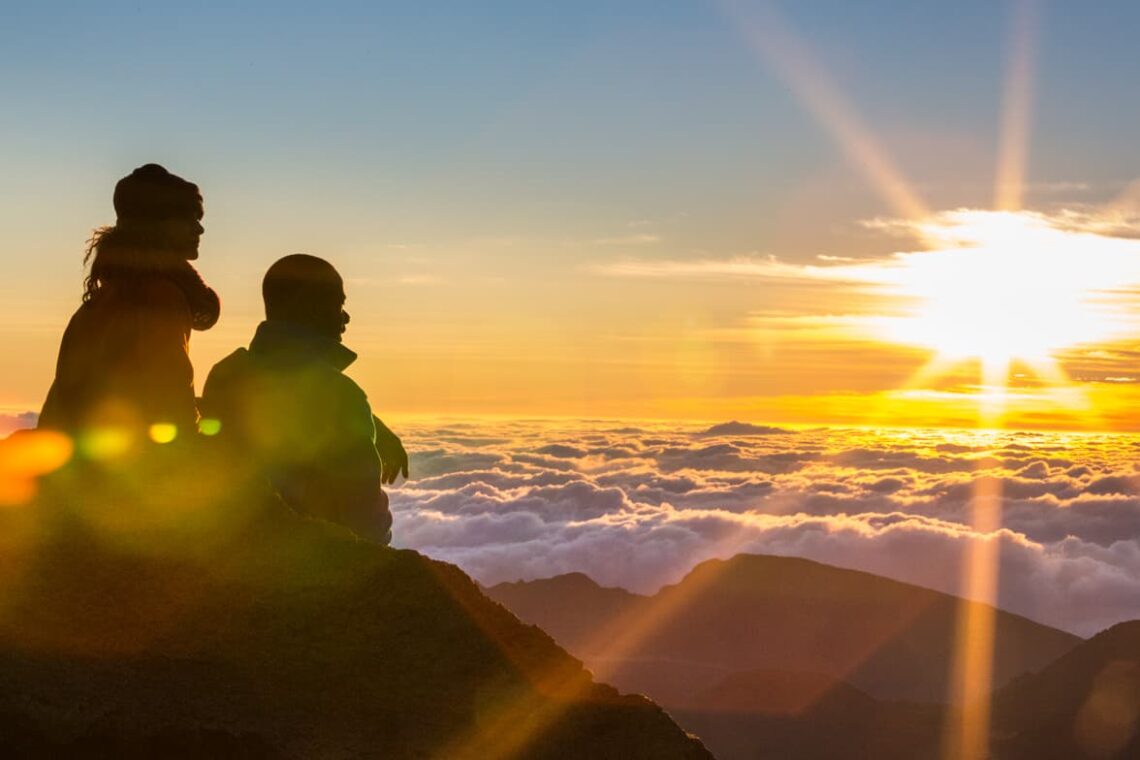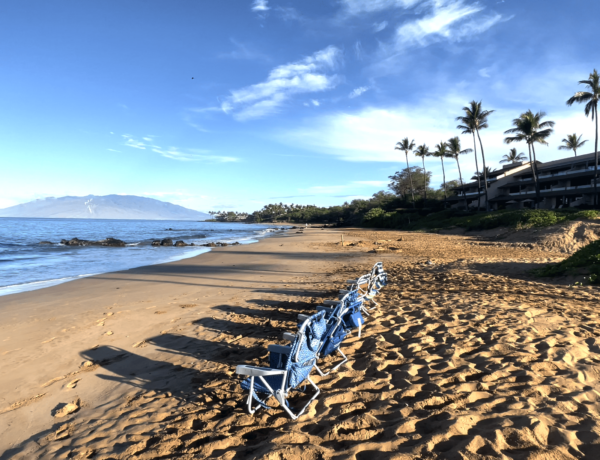Can’t decide whether you should drive to Haleakala’s summit at sunrise or sunset? Both timeframes promise the opportunity for a stunning view above the clouds at Maui’s House of the Sun.
But which time is better — sunrise or sunset?
Keep reading to find out which is the better option for your Maui trip.
This post contains affiliate links. By purchasing through these links, we may receive a small commission at no additional cost to you. Maui Trip Guide is also a participant in the Amazon.com Associates Program. As an Amazon Associate, we earn from qualifying purchases.
Why Haleakala National Park is so popular
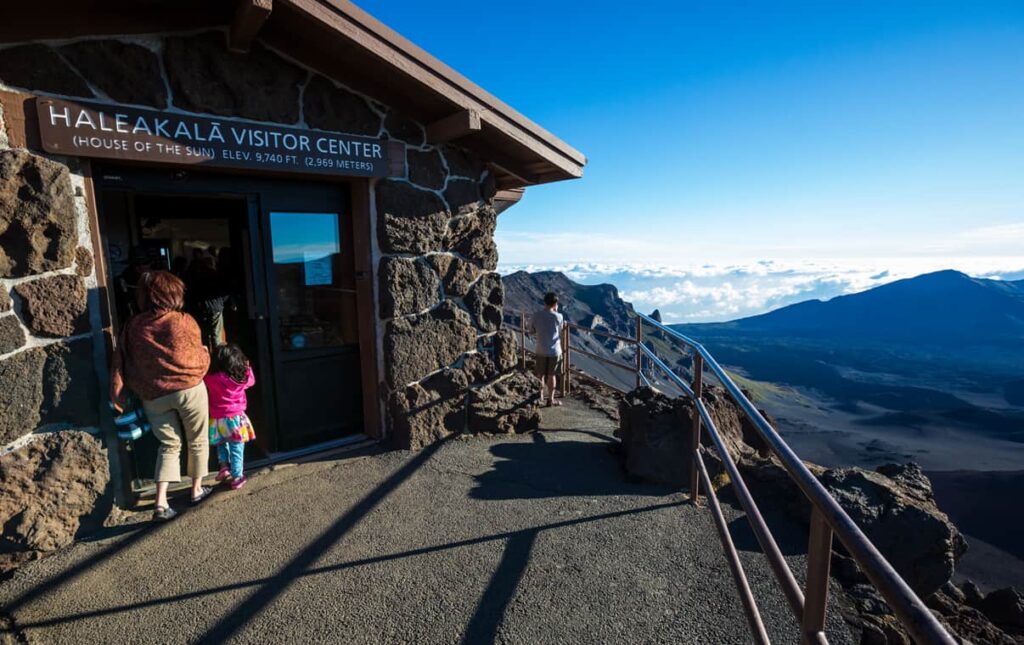
According to the National Park Service (NPS), more than 1 million people visited Haleakala National Park in 2022. The destination has long captivated travelers worldwide with its natural splendor and unique landscape.
At the heart of Haleakala National Park lies the looming Haleakala volcano, a dormant volcanic crater that leaves visitors in awe with its rugged beauty. Legend has it that the demigod Maui lassoed the sun to slow its pace and make the day last longer.
Beyond the celestial displays, Haleakala National Park boasts unique flora and fauna. The park is home to an array of plant and animal species, some exclusive to the Hawaiian Islands. From the silversword plants dotting the volcanic slopes to the graceful nēnē geese roaming the landscape, the park feels otherworldly.
Whether standing at the summit from the island’s highest point, surrounded by ethereal clouds, or exploring the diverse landscapes and hiking trails, a visit to Haleakala promises a breathtaking experience.
Visiting Haleakala at sunrise
There’s something awe-inspiring and uplifting about greeting a new day with the dawn. Everything is new again. For most Maui visitors, the first inclination is to experience Haleakala in the wee early hours. Because of the time slot’s popularity, the National Parks Service implemented a reservation system to keep crowds manageable at the summit.
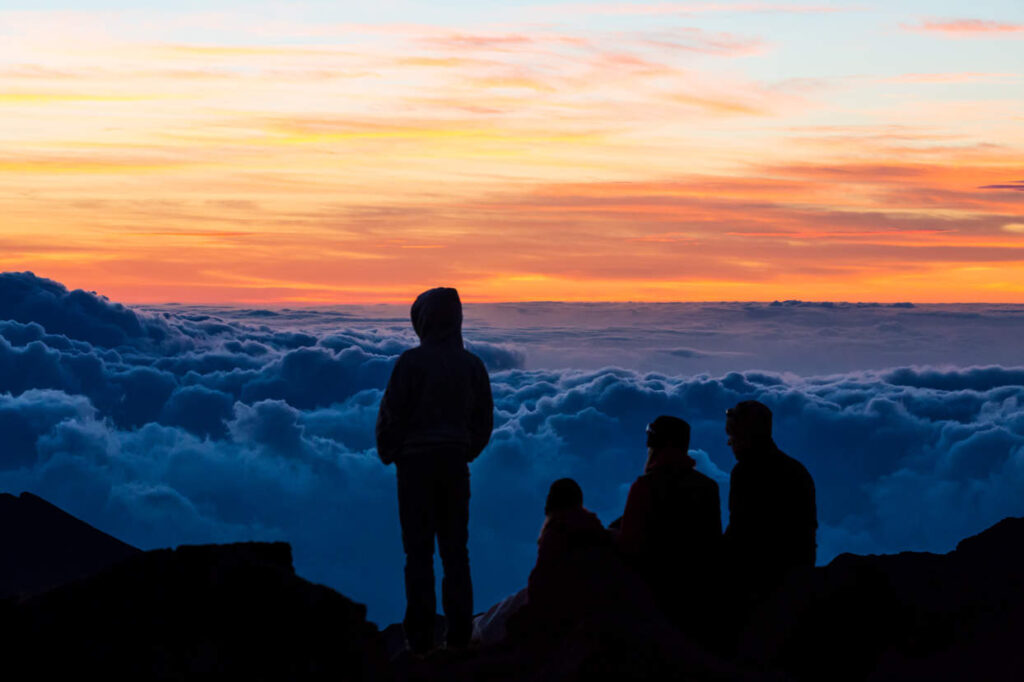
Benefits of visiting at sunrise
Hike the nearby trails after sunrise viewing. After enjoying the breathtaking sunrise at Haleakala, take advantage of the park’s trails and embark on a memorable hiking adventure through diverse landscapes, from volcanic cinder cones to lush forests. If you were to visit at sunset, you’d have to start your hike before sunset and time it so that you’re at the perfect viewing spot for sunset.
Explore Upcountry towns after sunrise and make a day of it. Extend your Upcountry visit by exploring nearby towns like Makawao and Paia. These charming island havens are known for their artistic communities, local boutiques, and delightful eateries.
Check it off your bucket list. The breathtaking colors painting the sky at sunrise will impart lasting memories and a deep connection with nature.
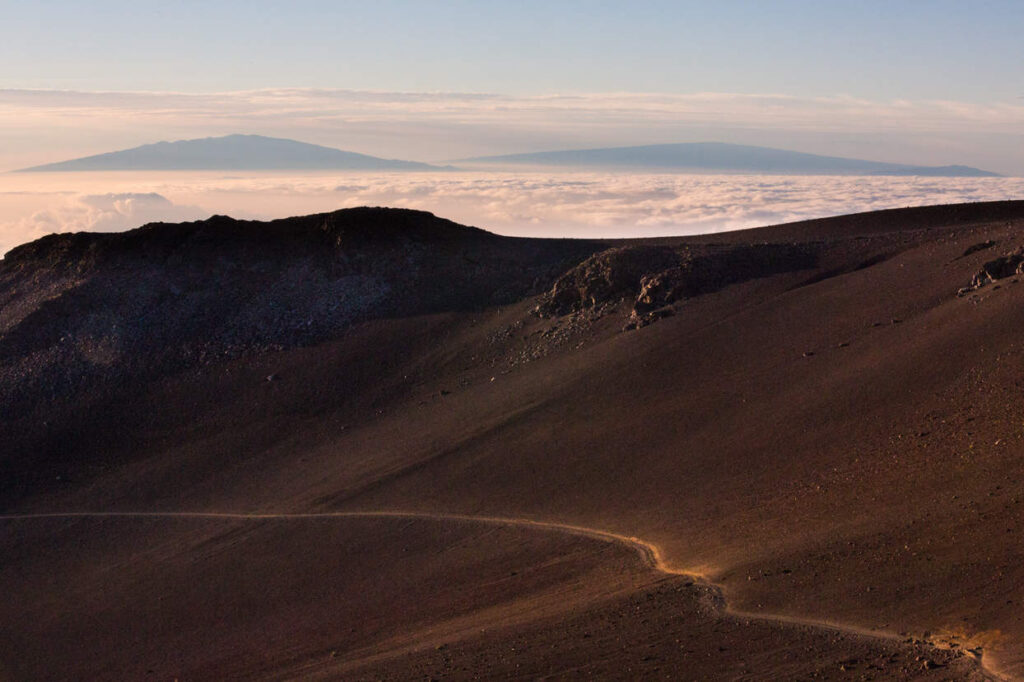
What to consider
Sunrise requires an early morning wake-up call. It takes hours to get to the summit from West Maui and South Maui, where most visitors stay. And not everyone may feel enthusiastic about a 3 a.m. wake-up call — even if you’re up early because of jet lag.
Reservations are hard to get, unless you pay for a tour. Some travelers have complained that online reservations sell out in mere minutes. Be prepared with high speed internet access and fast fingers when the park service releases sunrise tickets. Otherwise, booking with a reputable tour company will gain you entry — along with a ride to the summit.
No luck scoring a sunrise reservation? Check out this guided Haleakala National Park Sunrise Tour, which includes breakfast at Kula Lodge and a relaxing ride up to the summit.
It’s somewhat a gamble with the weather. Mother nature can be fickle, and Haleakala’s weather is no different. On some days, the view from the summit becomes shrouded with rain clouds or mist, obscuring the sun’s appearance. And since it’s still dark when you drive to the park, you won’t be able to judge the weather until you get there.
How to get reservations for Halakeala’s sunrise
You can’t access Haleakala National Park’s summit before sunrise without a reservation. Here’s how to land one.
- Online 60 days in advance. Reserve a date for sunrise entry through the official Recreation.gov website. Tickets are released at 7 a.m. HST. Reservations cost $1 and park entry is not included.
- Online 2 days in advance. Another batch of tickets are released 2 days prior, also at 7 a.m. HST.
- Book a guided tour. This is the most expensive option, but one with extra perks. Most commercial tours will pick you up from your hotel and stop for breakfast, too.
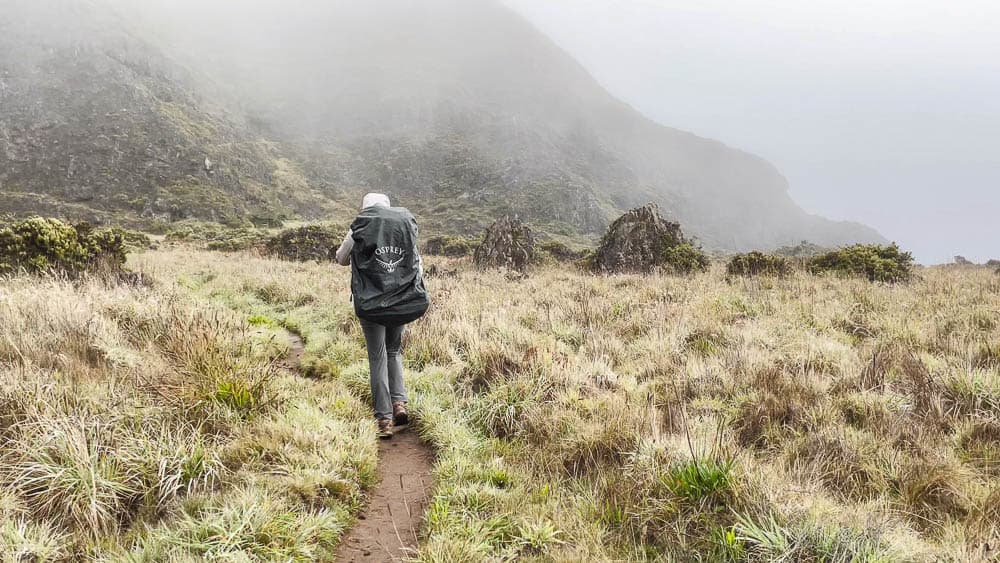
- Book a campsite. Outdoorsy visitors who book a campsite or backcountry permit have access to the sunrise view. Those booking a campsite at the Hosmer Grove Campground receive a sunrise reservation at Haleakala’s summit for the first morning.
Backcountry campers with wilderness tent permits have access to the sunrise view starting the second day of the permit, when already in the park (access to the park for the wilderness permit isn’t granted until after 7 a.m. on the first day of the permit).
Further reading | Off the Beaten Path: A Guide to Backpacking Haleakala National Park
Visiting Haleakala at sunset
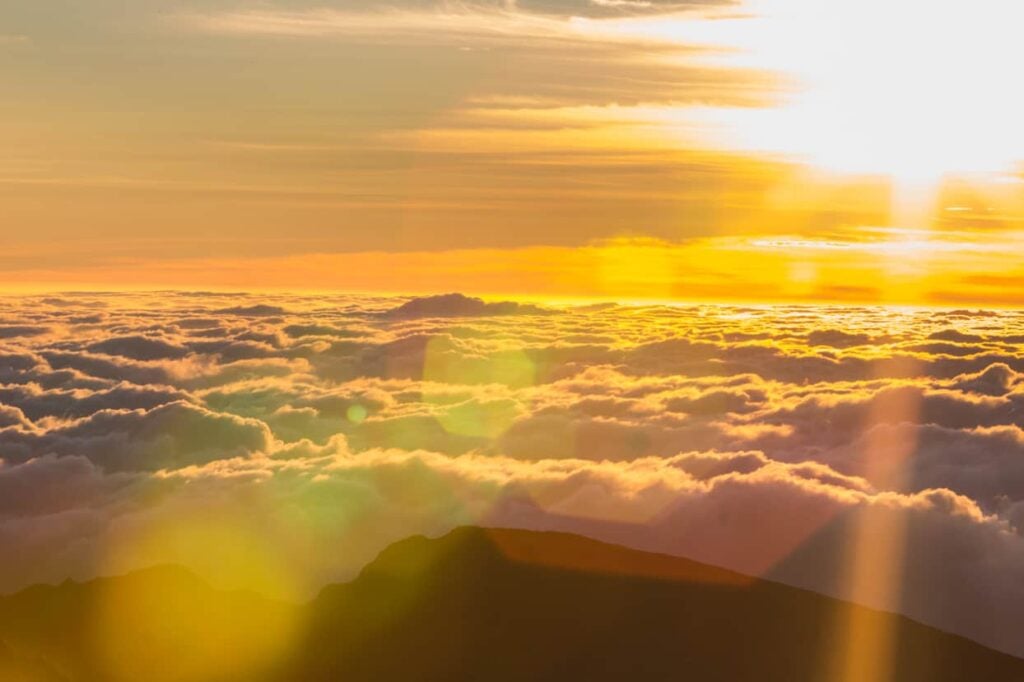
If sunrise isn’t plausible for your Maui trip, sunset from Haleakala’s summit may be an ideal alternative. At sunset, the fading light casts a warm glow over the terrain, creating a serene and reflective ambiance. The sky comes alive with shades of pink, orange, and gold as the sun gracefully disappears below the horizon.
Benefits of visiting Haleakala at sunset
- No reservations required. Unlike sunrise, you don’t need a reservation to visit Haleakala at sunset. For travelers who prefer a flexible vacation itinerary, sunset is the better option.
- Better weather estimate. When visiting at sunset, you have a better idea of what weather to expect on the day. Since Haleakala is visible from most parts of the island, you can check for cloud cover before you make the long drive to the summit.
If the volcano is shrouded in dark clouds, you probably won’t get a great view of the sunset that day. If you were to visit for sunrise, it’s too dark to see what the weather is like until you’re up there.
- An opportunity for serious stargazing. When the sky is clear, one of the benefits of being at the summit for sunset is enjoying the stars while perched at the top of Maui. Astronomers and astrophotographers shouldn’t miss Haleakala sunset and the subsequent stargazing.
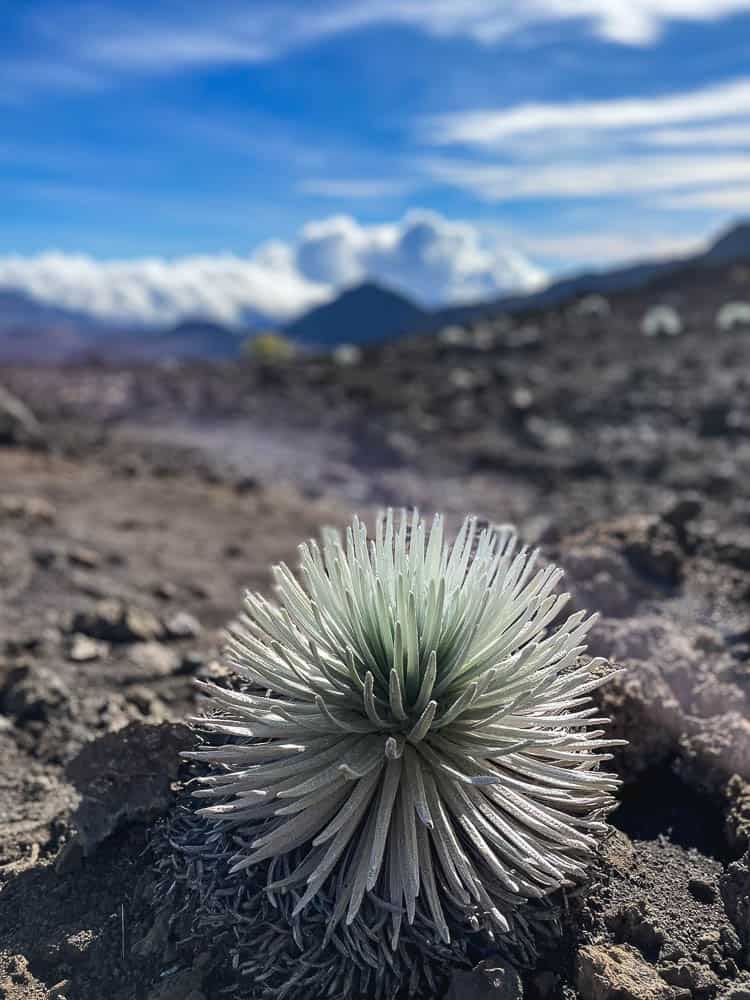
What to consider
- It’s a long drive back down — in the dark. Nervous downhill drivers might not enjoy driving back down to sea level after dark.
- You’ll need to time any pre-sunset hikes carefully. Otherwise, you could end up hiking back in the dark. If you’re hiking just before sunset, it’s probably a good idea to bring a flashlight or headlamp in case you get caught out after dark.
Must-read tips for visiting the Haleakala summit
Dress for cold weather. Even if the sky looks clear and the mercury reads 80°F at your hotel, don’t skimp on cold weather gear before heading to the summit. According to the NPS, the temperature at the summit typically hovers at 30°F chillier than at sea level. Wind chill and rainy conditions can also add to the shiver-inducing weather.
A jacket, beanie, gloves, pants, and thick socks will help you stay comfortable while you wait for sunrise or sunset. Some visitors even bring chairs and blankets for the event.
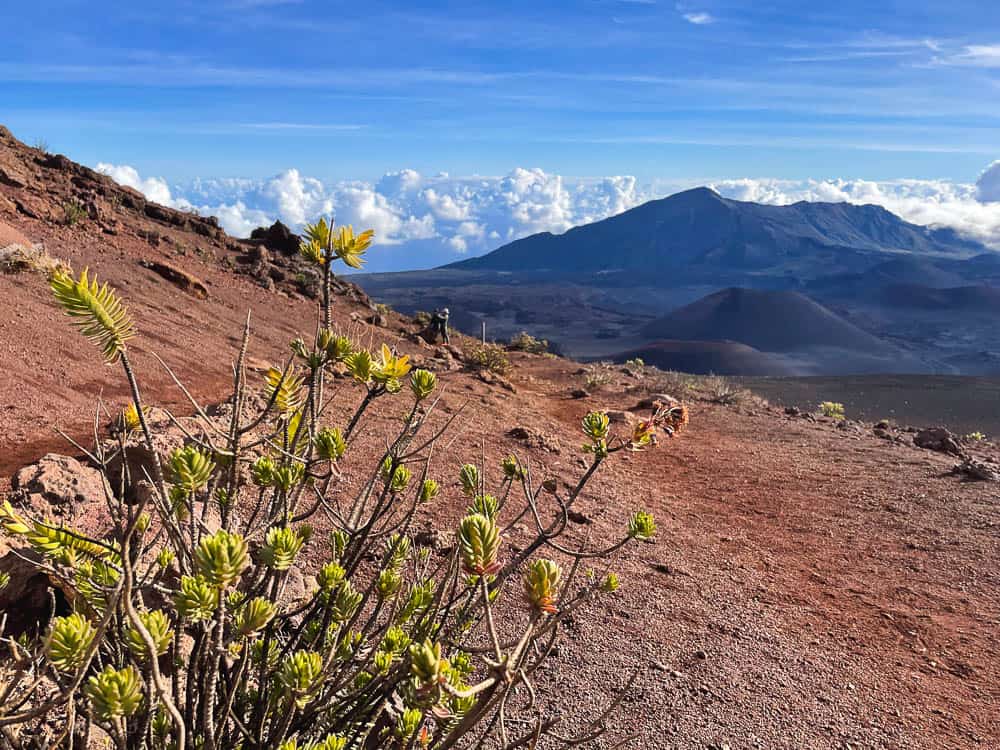
Don’t discount symptoms of altitude sickness. At an altitude of around 10,000 feet above sea level, expect a lower oxygen level. While some won’t notice a difference, others may experience signs of altitude sickness. Nausea, headache, dizziness, and shortness of breath are all symptoms that should be taken seriously.
I personally experienced an uncomfortable bout of shortness of breath while starting out on the Sliding Sands Trailhead from the summit. After a brief walk up a hill, I had to drop my pack and spend five minutes sitting quietly and practicing meditative breathing before I was able to acclimate to the oxygen level.
While the experience was disconcerting, I was eventually able to continue and complete the hike. If my symptoms had continued or gotten worse, I would have immediately driven down to a lower elevation.
Be aware: the weather doesn’t always cooperate. We often tend to think of Hawaii weather as perpetually sunny and hot. In reality, weather on a tropical island can turn temperamental, and quickly. Clouds and rainstorms can shroud the most stunning of sunrises and sunsets.
If you encounter less than stellar weather, I encourage you to take it in stride. You may not have experienced the sunrise or sunset you’d imagined. But remember: you’re vacationing on Maui. A visit to the famed Haleakala is an adventure unto itself.
Think twice if you’re easily prone to car sickness. The drive up the summit is a long road with many switchbacks. If you’re known to get motion sickness, take the precautions that work best for you — from medication to anti-nausea bands. And if you’re hyper-sensitive, think twice about taking the drive up. Or prepare to turn the car around if the journey proves too taxing on your body.
Prepare for a long and remote drive to the park. If you’re visiting Haleakala National Park for the first time, you may not realize how long it will take to get to the summit. From Wailea, expect to spend around 3 hours in the car, and around 3.5 hours on the road from Lahaina.
Not only should you start the journey with a full tank of gas in the car, but don’t forget any creature comforts you’ll need. Along with cold weather gear, pack snacks and beverages for the road trip.
Don’t expect solitude at sunrise or sunset. While this might seem obvious, it gets crowded at the summit for both sunrise and sunset. If you’re expecting solitude at the volcano’s peak, don’t count on it.
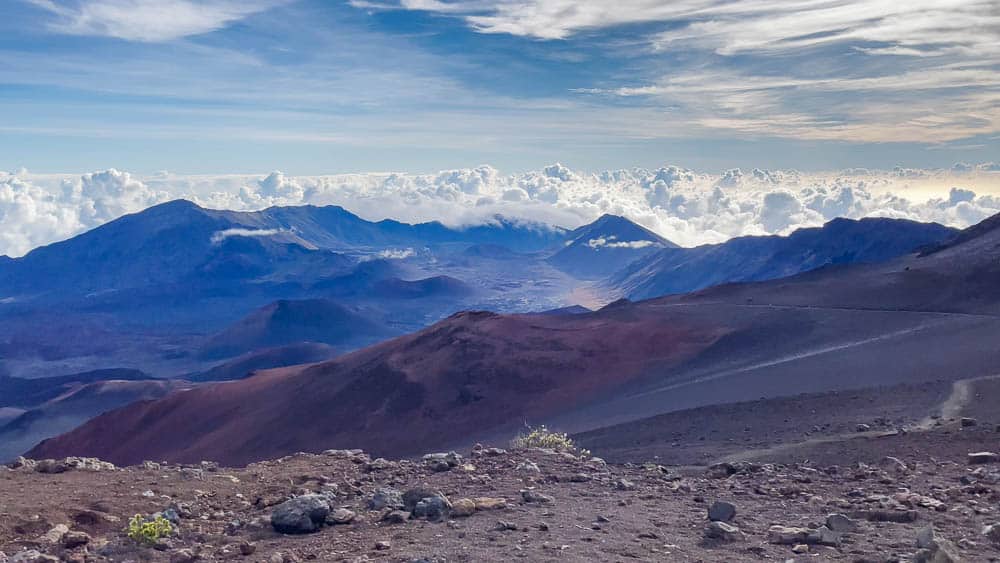
The verdict: Haleakala sunrise vs. sunset
You can rely on stunning views at both sunrise and sunset (weather permitting) from the Haleakala summit. But for us, waking up several hours pre-dawn for a long drive isn’t an appealing prospect. Not to mention the stress of scoring a reservation.
If we had to choose, sunset is the way to go. Reservations aren’t required, so you can stay flexible with your Maui plans. Also, you can get a better idea of how cloudy it is before you make the long drive up to the summit. That’s not the case with sunrise.
